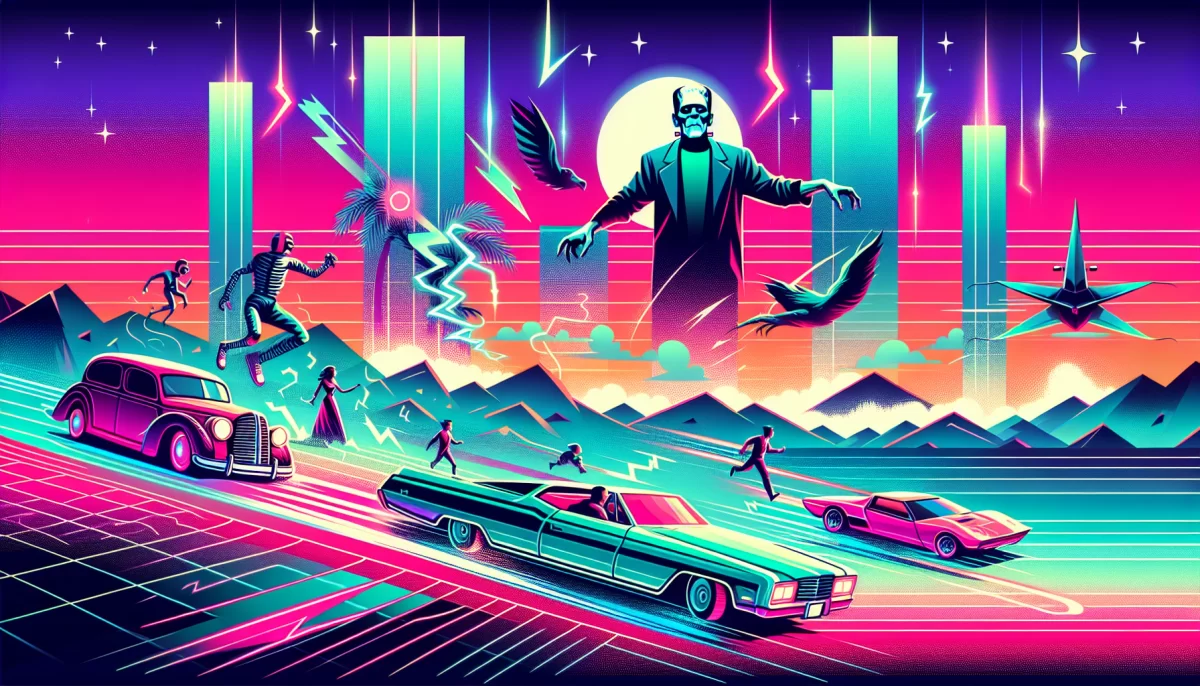
Frankenstein Review: A Stylish, Thoughtful Classic Adaptation
Guillermo del Toro’s much-anticipated adaptation of Frankenstein emerges as a sumptuous, meticulously crafted retelling of Mary Shelley’s timeless novel. Poised between reverent homage and cinematic artistry, this film blends gothic horror with profound themes of trauma, humanity, and redemption, making it profoundly relevant to contemporary audiences.
Introduction to Frankenstein’s Enduring Legacy
Mary Shelley’s Frankenstein, published in 1818, has inspired countless reinterpretations in literature, theater, and film. The story explores the dangers of unchecked ambition, the complexities of creation, and the struggles of an outcastigenius—resonating today amid discussions of scientific ethics and societal alienation. Guillermo del Toro’s latest adaptation stays remarkably true to the source material while enriching it with modern cinematic techniques and emotional depth.
Key Aspects of Guillermo del Toro’s Frankenstein Adaptation
Faithful Yet Innovatively Visualized Storytelling
The film opens with a gripping prologue: a Royal Danish ship bound for the North Pole in 1857 encounters Victor Frankenstein (Oscar Isaac) pursued by a relentless, near-unstoppable rogue figure. Evoking comparisons to archetypal monsters like the Terminator, this introduction sets a tone that combines suspense with gothic grandeur.
Divided into two parts, the narrative first follows Victor’s perspective, unveiling his motivations rooted in deep psychological trauma—his complicated paternal relationships, Oedipal tensions, and fraternal jealousy. The film then shifts to the creature’s viewpoint, humanizing the archetypal monster and exploring his journey from vulnerable innocence to fierce protector.
Stunning Production Design and Use of Practical Effects
Renowned for his visual storytelling, del Toro integrates vivid color symbolism throughout. Blood red dominates Victor’s world, symbolizing obsession and destructive passion, while Elizabeth’s vibrant jewel tones embody empathy and humanity. The production’s attention to detail is outstanding—physical effects like flesh-sawing surgery, bone-breaking injuries, and sewn chimera constructions are rendered with minimal CGI, creating an immersive, visceral atmosphere that honors classical film techniques.
Powerful Performances and Character Depth
- Oscar Isaac</strong delivers a multi-layered portrayal of Victor Frankenstein, embodying a man torn between godlike ambition and vulnerability.
- Jacob Elordi</strong portrays the creature with nuanced physicality, vocal restraint, and deeply expressive eyes, eliciting empathy for a character often depicted as monstrous.
- Mia Goth</strong shines as Elizabeth, adding gothic flair and emotional warmth, serving as a moral compass within the narrative.
- Christoph Waltz</strong supports with compelling presence as the arms dealer funding Victor's projects, underscoring themes of exploitation and the industrial scale of death.
Relevant Themes and Contemporary Significance
Del Toro’s Frankenstein probes themes of trauma, cruelty, and forgiveness — subjects echoed in today’s social and political climates. By portraying Victor and his creation as reflections and opposites, the film highlights the human cost of obsession and the capacity for empathy. Notably, the tension between embracing ‘the other’ and succumbing to fear mirrors contemporary divisions across political and social spheres.
The Monster as a Symbol of Otherness
True to del Toro’s filmography — including Pan’s Labyrinth and The Shape of Water — the monster is both hero and victim. Physical scars, prosthetics, and mannerisms reinforce his outsider status, challenging audiences to reconsider preconceptions about identity and acceptance. This approach aligns with recent scholarly analyses on monster narratives as metaphors for marginalized experiences (Haggerty, 2022, Monsters and Metaphors).
Cinematic Pace and Narrative Choices
The film’s pacing is deliberate, potentially challenging viewers accustomed to fast-paced horror. The pivotal moment of Frankenstein’s creation is understated yet impactful, emphasizing the emotional reality over spectacle. This style favors a faithful literary adaptation, offering depth to those familiar with Shelley’s text while providing a fresh cinematic experience.
Comparative Case Studies and Industry Context
In comparison to previous adaptations — such as James Whale’s 1931 Frankenstein or Kenneth Branagh’s 1994 version — del Toro’s film distinguishes itself through its blending of gothic horror with psychological realism and modern symbolism. The practical effects, praised by star Christoph Waltz who dismissed CGI as inferior “for losers,” align with growing industry trends favoring tactile artistry to enhance audience immersion.
Additional Insights and Related Works
- Streaming Trends: Netflix, where the film will later debut, has become a pivotal platform for high-profile literary adaptations, providing broad accessibility (Statista, 2025).
- Actors’ Range: Jacob Elordi’s performance as the monster showcases the rising trend of actors embracing complex physical roles with minimal dialogue, contributing to nuanced storytelling.
- Relevance to Modern Audiences: The film’s exploration of social media savagery and political division provides a mirror reflecting current global challenges, deepening its cultural resonance (Pew Research Center, 2024).
Conclusion: A Classy, Thought-Provoking Adaptation of Frankenstein
Guillermo del Toro’s Frankenstein stands as a visually arresting, intellectually engaging adaptation poised to captivate fans of classic literature and cinema alike. While its patient pace and adherence to the original text may not appeal to those seeking action-heavy horror, its emotional depth, production excellence, and thematic relevance secure it a distinguished place in the ongoing legacy of the Frankenstein story.
Summary of Strengths and Considerations
- Strengths: Stunning production design, faithful adaptation, strong performances, thematic richness.
- Considerations: Slower narrative tempo, a careful balance of fidelity which might deter those seeking radical reinterpretations, and the delayed appearance of the monster.
Further Reading and Viewing
For those interested in exploring more about Frankenstein and gothic cinema, consider the following resources:
- Britannica: Frankenstein by Mary Shelley
- Turner Classic Movies: History of Frankenstein Film Adaptations
- Literary Hub: Monsters and the Art of Empathy
(Image Credit: © Netflix)
Disclaimer: The review is based on early screenings and available information as of mid-2025. Release in theaters is scheduled for October 17, followed by streaming on Netflix starting November 7.


